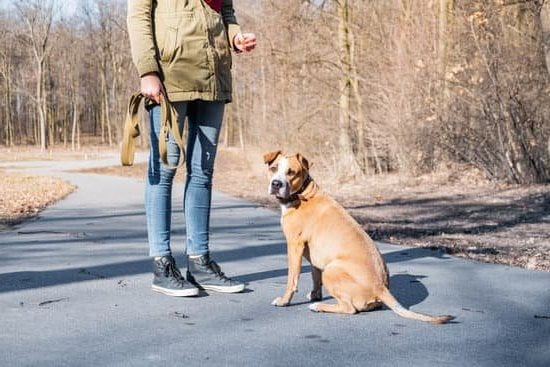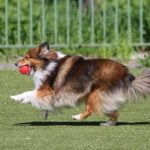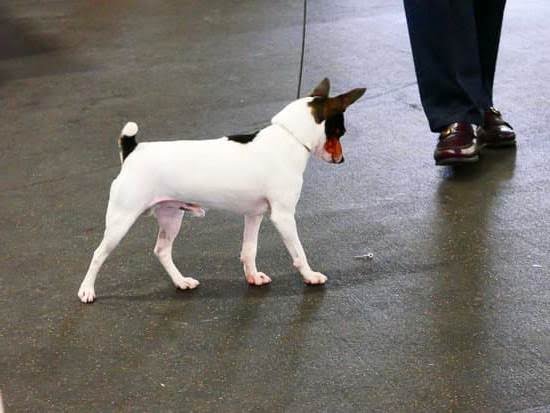Training your dog to give you her paw is not only a fun trick, but it also has many practical benefits. In this article, we will explore why teaching your dog to give you her paw is important and how it can enhance communication, strengthen your bond, and showcase obedience.
We will also provide a step-by-step guide on how to train your dog to give you her paw, along with tips for troubleshooting common challenges and maintaining and progressing your dog’s paw giving skills.
Having a strong line of communication with your dog is crucial in building a successful relationship. Teaching your dog to give you her paw can serve as an essential means of communication between the two of you. Being able to understand and respond to this simple command can open up a whole new level of interaction and understanding between you and your furry companion.
Not only does training your dog to give you her paw improve communication, but it also strengthens the bond that you share. The time spent training together creates a sense of trust and teamwork, which further enhances your relationship. Additionally, by engaging in regular training sessions, you are providing mental stimulation for your pup, keeping their mind sharp and active.
Lastly, teaching your dog to give you her paw showcases their obedience and good behavior. It demonstrates their ability to follow commands and obey instructions from their owner. This not only impresses guests but also enhances safety by ensuring that your dog listens when necessary.
Now that we understand the importance of teaching our furry friends the “paw” command, let’s delve into understanding the psychology behind paw giving in the next section.
Understanding the Psychology Behind Paw Giving
When it comes to training your dog to give you her paw, it is important to have a deeper understanding of the psychology behind this behavior. Dogs naturally use their paws to interact with their environment, and by understanding this instinctual behavior, we can create a more effective training approach.
One key aspect of successful training is positive reinforcement. Dogs are motivated by rewards and praise, so it is essential to create an ideal learning environment where they feel motivated and engaged. By using treats, praise, and petting as rewards for correctly responding to the “paw” command, we can strengthen the desired behavior in our dogs.
To prepare for paw training, there are some essential tools that you will need. Firstly, make sure you have some small, soft treats that your dog finds highly rewarding. These treats should be easy to chew quickly so that your dog can receive prompt reinforcement during the training sessions.
Additionally, a clicker can be useful in marking the exact moment when your dog performs the desired behavior. Finally, find a quiet area where you and your dog can focus without distractions.
To create a positive and focused environment for training sessions, start by removing any potential distractions from the area. Ensure that there are no tempting objects or noises that could divert your dog’s attention away from you. It is also important to establish a calm demeanor yourself and maintain a patient attitude throughout the training process.
In summary, understanding the psychology behind paw giving is crucial for successful training sessions with your dog. By recognizing their natural inclination to use their paws and employing positive reinforcement techniques, you can establish a solid foundation for teaching your dog this adorable trick. So gather those delicious treats and get ready to embark on an exciting journey of communication and bonding with your furry friend.
Preparing for Paw Training
When it comes to training your dog to give you her paw, preparation is key. By ensuring you have the right tools and creating a positive and focused environment, you can set both yourself and your furry friend up for success during training sessions. In this section, we will discuss the essential tools needed and provide tips on creating an ideal learning atmosphere.
Gather the Essential Tools
Before starting paw training, make sure you have all the necessary tools at hand. Treats are an excellent form of positive reinforcement and should be small, soft, and irresistible to your dog. Consider using high-value treats such as small pieces of cooked chicken or freeze-dried liver. It’s important to use treats that your dog finds highly rewarding in order to motivate her during the training process.
A clicker can also be a valuable tool during paw training. The clicker provides a clear sound marker that signals to your dog when she has performed the desired behavior correctly. Clickers are inexpensive and readily available at pet stores. If you prefer not to use a clicker, you can use a verbal marker such as saying “yes” or “good” in a consistent tone.
Additionally, find a quiet training area free from distractions where you can focus solely on teaching the paw command. This could be a designated spot in your home or even outdoors in your backyard if it provides a calm environment without too many smells or noises that may divert your dog’s attention.
Create a Positive Learning Environment
To ensure successful training sessions, it’s important to create an environment that promotes focus and positivity. Start by eliminating any potential distractions such as loud noises or other pets in the vicinity. Turn off televisions or radios to minimize background noise that may cause your dog to lose concentration.
Use positive reinforcement techniques such as praise, treats, and petting to reward your dog’s correct response during training. By introducing these rewards, you are associating the act of giving her paw with a positive experience. Be sure to deliver the rewards immediately after she performs the desired behavior to reinforce the connection between the action and the reward.
Consistency is key when it comes to training your dog. Use consistent cues or signals when teaching the paw command, whether it’s a verbal cue like “paw” or a hand signal such as an open palm held out towards your dog. Stick to one cue or signal throughout the training process to prevent confusion and ensure clarity for your dog.
By gathering the necessary tools and creating an environment conducive to learning, you can set yourself and your dog up for success during paw training. Now that you’re prepared, let’s move on to the step-by-step guide for teaching the “Paw” command in the next section.
Step-by-step Guide
Teaching your dog the “Paw” command is a fun and useful trick that can strengthen your bond and improve communication between you and your furry friend. In this step-by-step guide, we will walk you through the process of teaching your dog to give you her paw.
- Start with Basic Commands: Before introducing the “Paw” command, make sure your dog has a solid understanding of basic commands like “sit” or “stay.” This foundation will make it easier for your dog to grasp new commands.
- Capture and Encourage the Behavior: Begin by observing your dog’s natural behavior of lifting her paw. As soon as she does so, use a clicker or vocal marker such as “yes” to indicate that she has done something right. Immediately reward her with a treat and praise. Repeat this process several times until it becomes clear that your dog is associating the action of lifting her paw with rewards.
- Introduce the Verbal Cue or Hand Signal: Once your dog starts consistently lifting her paw in response to the previous steps, introduce a verbal cue like “paw” or a hand signal that you want to associate with the action. Say the cue just before she lifts her paw, then immediately reward and praise her once she complies. It may take some repetition for your dog to understand the connection between the cue and action.
Remember, consistency is key when training your dog. Practice this step-by-step guide regularly in short sessions to reinforce the desired behavior effectively. As your dog becomes more comfortable with giving you her paw, you can gradually reduce the use of treats and rely more on verbal praise or petting as rewards.
| Step | Action |
|---|---|
| 1 | Start with basic commands |
| 2 | Capture and encourage the behavior |
| 3 | Introduce verbal cue or hand signal |
By following this step-by-step guide, you can successfully teach your dog the “Paw” command. Stay patient and enjoy the process of training, as it is a wonderful opportunity to bond with your dog and further develop your relationship. In the next section, we will explore positive reinforcement techniques to enhance your training sessions even further.
Using Positive Reinforcement Techniques
Positive reinforcement is a crucial aspect of training your dog to give you her paw. By using this technique, you will be able to reward and reinforce the desired behavior, making it more likely for your dog to repeat it in the future. Here are some effective techniques to incorporate positive reinforcement into your paw training sessions:
- Use treats: Treats are often the most effective way to reward your dog during training. Choose small, soft treats that your dog can easily chew and swallow. When your dog successfully gives you her paw, immediately praise her and offer her a treat. This will help her associate the action with a positive outcome.
- Provide praise and petting: Dogs thrive on positive attention and physical affection from their owners. In addition to giving treats, provide verbal praise, such as saying “good girl” or “well done,” along with gentle petting and scratching behind the ears when your dog offers her paw. This combination of rewards will make the training experience enjoyable for both you and your furry friend.
- Timing is everything: Timing plays a crucial role in reinforcement training. Make sure to give the reward immediately after your dog performs the desired behavior, so she can make the connection between her action and the reward. Delaying the reward may confuse your dog or cause her to lose interest in the training session.
- Be consistent: Consistency is key when using positive reinforcement techniques. Always reward your dog for offering her paw correctly, but avoid rewarding any other behaviors during this specific training exercise. This will help your dog understand exactly what she is being rewarded for, making it easier for her to learn and remember the command.
Remember that each individual dog responds differently to different types of rewards, so experiment with various treats or types of praise to find what motivates your furry friend best.
By consistently utilizing positive reinforcement techniques during paw training sessions, you will create a positive learning environment that promotes engagement and obedience in your dog.
Troubleshooting Common Challenges
Lack of Progress
One common challenge that dog owners may face while teaching their dogs to give them their paw is a lack of progress. It can be frustrating when your dog doesn’t seem to understand or respond to the training cues. However, it’s important to remember that every dog learns at their own pace, and patience is key in this process.
To overcome this challenge, it’s essential to evaluate your training techniques and make any necessary adjustments. Ensure that you’re using positive reinforcement consistently and providing clear and concise cues. Break down the training steps into smaller, more manageable ones, allowing your dog to grasp each stage before moving on.
Additionally, consider varying the rewards you offer during training sessions. Dogs have individual preferences for treats or toys, so find what motivates your dog the most and use it as an incentive for learning. By making the training sessions engaging and enjoyable for your dog, you increase the likelihood of progress.
Distractions
Another common challenge during paw training is dealing with distractions. Dogs are naturally curious creatures, often easily distracted by noises, people passing by, or other animals in their surroundings. When faced with distractions during training sessions, it can be difficult for your dog to remain focused on learning the “paw” command.
To address this challenge, start with a quiet and controlled environment for training sessions free from distractions. As your dog becomes more adept at following commands in this controlled setting, gradually introduce controlled distractions such as mild noises or low-level activity.
If your dog becomes excessively distracted during a session, take a step back and redirect their focus before continuing with the training exercise. You can use treats or toys to regain their attention and keep them engaged throughout the session.
Resistance
Some dogs may show resistance or reluctance when initially introduced to giving their paw. This resistance could stem from a fear or discomfort related to paw handling. It’s crucial to address any underlying concerns and create a positive association with paw handling for your dog.
Start by gently desensitizing your dog to having their paws touched. Gradually introduce touch in a non-threatening manner, rewarding your dog whenever they remain calm and relaxed during the process. Use treats or verbal praise as rewards each time you touch their paw, gradually progressing towards asking for a paw shake.
If your dog continues to resist, it may be beneficial to consult with a professional dog trainer or behaviorist who can provide further guidance tailored to your specific situation. They can help identify the root cause of resistance and develop an individualized training plan that helps your dog overcome their apprehensions.
Remember, troubleshooting common challenges is an integral part of the training journey. With patience, consistent practice, and positive reinforcement, you’ll be able to navigate these obstacles and successfully train your dog to give you her paw.
Reinforcing the Paw Command in Real-life Situations
Once your dog has mastered the “paw” command in a controlled training environment, it is essential to reinforce this behavior in real-life situations. Generalizing the paw command means teaching your dog to perform the behavior consistently in various scenarios, ensuring that they understand that the command applies beyond just obedience training sessions. This section will provide suggestions on how to reinforce the training outside of formal sessions, ensuring consistent obedience.
One important scenario where reinforcing the paw command is crucial is during greetings with strangers. Teach your dog to offer their paw when meeting new people as a polite gesture. Start by practicing with friends or family members who are willing to participate in the training process and understand how to interact with dogs safely.
Before each interaction, remind your dog of their training by commanding “paw” and offering positive reinforcement for compliance. Gradually work towards having your dog offer their paw without being prompted, rewarding them generously for successful greetings.
Another situation where reinforcing the paw command is valuable is during veterinary visits. Many dogs find such visits stressful or uncomfortable due to unfamiliar sights, smells, and procedures. By incorporating the “paw” command into these visits, you can create a positive association and help alleviate anxiety for both you and your dog.
Before entering the clinic, have your dog perform the “paw” command outside using treats and rewards as reinforcement. Once inside, continue practicing the command while waiting or interacting with veterinary staff to distract them from any potential fears or anxieties.
| Situation | Strategy |
|---|---|
| Greetings with strangers | – Start by practicing with familiar individuals
|
| Veterinary visits | – Practice the “paw” command before entering the clinic
|
Remember that consistency is key when reinforcing the paw command in real-life situations. It may take time for your dog to generalize their training, so be patient and continue providing positive reinforcement. Consistently practicing the command in various scenarios will strengthen your dog’s understanding and compliance, ensuring that they offer their paw reliably in different contexts.
Maintaining and Progressing Your Dog’s Paw Giving Skills
After your dog has mastered the paw command, it is important to continue practicing and maintaining this skill to ensure long-term obedience. Consistency is key when it comes to reinforcing good behaviors, so make sure to incorporate paw giving into your daily routines. Additionally, you can take this training a step further by progressing your dog’s paw giving skills.
One way to advance the skill is by replacing verbal cues with hand signals. By pairing a specific hand motion with the “paw” command, you can eventually phase out the verbal cue altogether. This helps your dog understand that the hand signal is now associated with the desired behavior. Practice using the hand signal consistently during training sessions and gradually decrease reliance on verbal cues. Remember to reward your dog each time they respond correctly to the hand signal.
Another way to progress your dog’s paw giving skills is by introducing more complex variations of the behavior. Once your dog has mastered basic paw giving, you can teach them variations like high-five or waving.
To do this, start by using similar techniques as in the initial training process – capture and reward any movement resembling the desired behavior and gradually pair it with a verbal cue or hand signal specific to each variation. With practice and positive reinforcement, your dog will quickly learn these new commands.
It’s important to remember that training should always be a positive experience for both you and your dog. Keep sessions short and engaging, using treats, praise, and petting as rewards for correct responses. Be patient with your furry companion as they learn new skills and be prepared for some trial and error along the way. Remember that building a strong bond with your pet takes time and effort but will ultimately result in a well-trained and happy companion.
By continuously practicing and progressing your dog’s paw giving skills, you are not only fostering their obedience but also strengthening your relationship through trust and clear communication. Enjoy celebrating each milestone together as you watch your canine companion flourish in their training journey.
Conclusion
In conclusion, training your dog to give you her paw is not only a fun and impressive trick, but it also strengthens the bond between you and your furry companion. By following the outlined steps and understanding the psychology behind paw giving, you can establish better communication and showcase your dog’s obedience. Remember to create a positive learning environment, use positive reinforcement techniques, and troubleshoot common challenges along the way.
Throughout this training process, it is crucial to celebrate your dog’s success and build upon their training skills. Patience and consistency are key in ensuring progress, as every dog learns at their own pace. Keep in mind that using positive reinforcement methods like treats, praise, and petting will motivate your dog to continue displaying the desired behavior.
As your dog becomes more proficient in giving her paw on command, don’t be afraid to advance her skills further. Consider transitioning from verbal cues to hand signals or introducing more complex variations like high-five or waving. This will not only provide mental stimulation for your dog but also deepen the bond between you two.
Above all else, remember that training your dog is an ongoing process. Consistent practice and reinforcement in different scenarios will help reinforce their learned behaviors. Embrace the learning journey with patience and dedication, celebrating each achievement along the way. With time, effort, and love, you will develop a happier and healthier relationship with your four-legged friend through this simple yet impactful training exercise.
Frequently Asked Questions
How long does it take to teach a dog to give paw?
The time it takes to teach a dog to give paw can vary depending on several factors. Certain dogs are naturally more eager to please and learn commands quickly, while others may take longer due to their temperament or previous training experiences.
Generally, it can take a few weeks of consistent practice and positive reinforcement for a dog to reliably give their paw on command. It’s important to break the training into small steps, starting with getting the dog comfortable with having their paws touched before moving on to associating the touch with the “give paw” command.
Why won’t my puppy give me his paw?
There could be various reasons why your puppy is not giving you his paw. First and foremost, puppies need time to adjust to their new environment and build trust with their owners. It’s possible that your puppy is still in the process of bonding with you and may not fully understand what you’re asking for when you reach out for his paw.
Additionally, puppies might not have developed enough coordination or understanding of commands at a very young age, so patience is key during their early stages of learning. Ensure that you use positive reinforcement techniques such as treats and praise when trying to teach this behavior.
Do dogs give you their paw?
Yes, some dogs do give their paw as part of an obedience command or as a way to interact with humans. However, it ultimately depends on how well the dog has been trained by its owner or previous owner. Teaching a dog to give paw is a common trick often taught during basic obedience training classes or by individual owners through consistent practice and rewards-based training methods.
Many dogs enjoy using their paws for interaction since it can be an effective way for them to communicate needs or seek attention from humans. However, not all dogs naturally offer this behavior without being specifically trained to do so.

Welcome to the blog! I am a professional dog trainer and have been working with dogs for many years. In this blog, I will be discussing various topics related to dog training, including tips, tricks, and advice. I hope you find this information helpful and informative. Thanks for reading!





